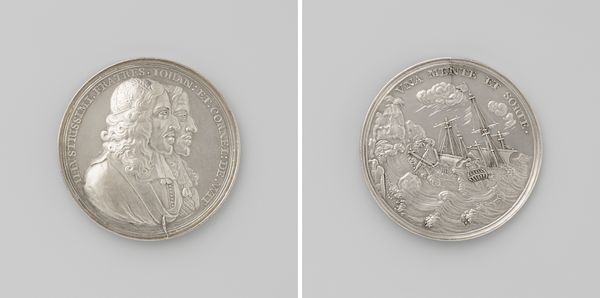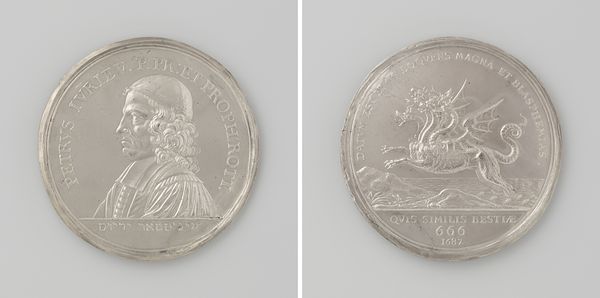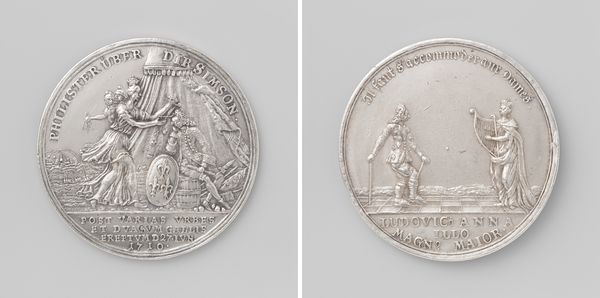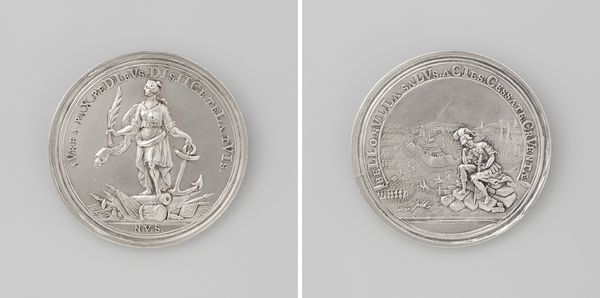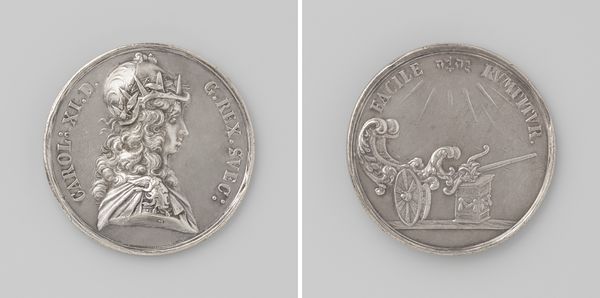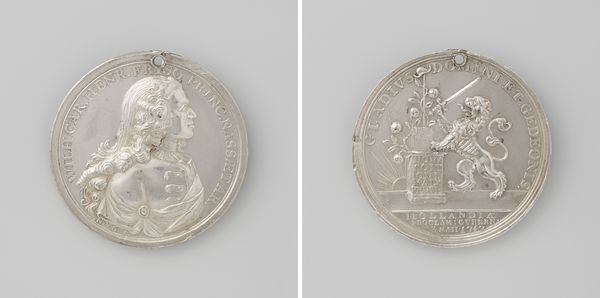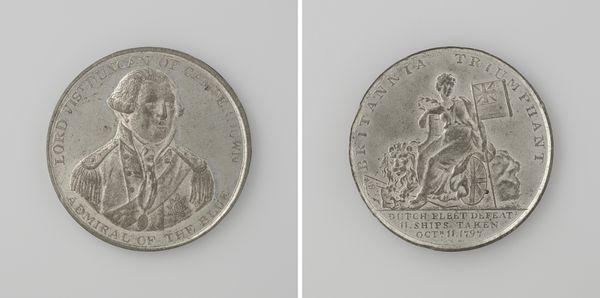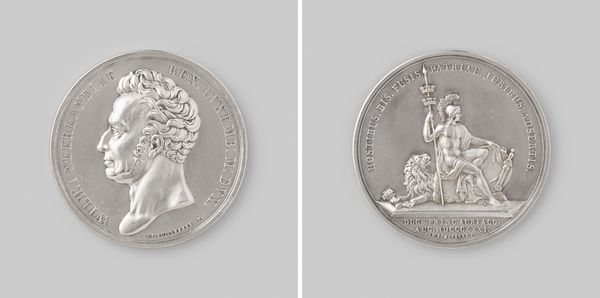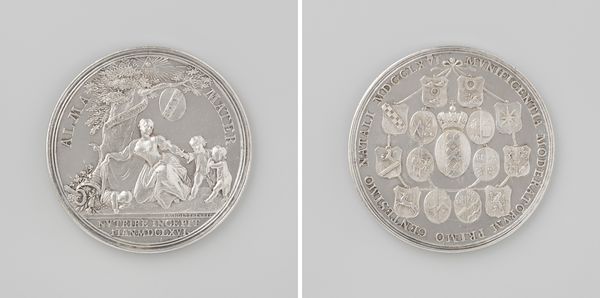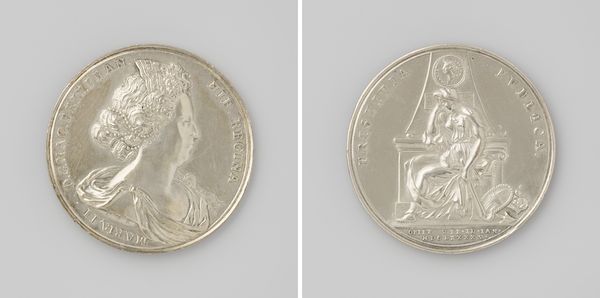
silver, metal, relief, sculpture
medal
silver
allegory
baroque
metal
relief
sculpture
history-painting
Dimensions: diameter 6.8 cm, weight 64.13 gr
Copyright: Rijks Museum: Open Domain
Curator: Here we have Johannes Drappentier's silver medal, "Vrede van Utrecht," created in 1713. The piece commemorates the Treaty of Utrecht, marking the end of the War of the Spanish Succession. Editor: The stark, polished silver gives it a striking reflective quality, doesn’t it? And the relief is quite intricate, giving the figures a surprisingly lifelike dimension despite the diminutive scale. Curator: Indeed. Drappentier, a skilled medalist, uses allegory here to represent peace and liberty. Note how these virtues are personified by the two female figures on the obverse side, trampling war's instruments, cannon and broken drums. It reflects the widespread hope that the Treaty of Utrecht would usher in an era of sustained peace and prosperity in Europe. Editor: I find it fascinating how the composition directs the viewer’s eye. The eye is initially drawn to the figures, then outwards around the inscriptions bordering each face. How was this type of art viewed in the period? Were people in contact with the original treaty impacted? Curator: Absolutely! Medals like this served a crucial propaganda function. They were distributed to dignitaries, used in diplomatic exchanges, and even sold to the public. Their symbolism shaped the understanding of the Treaty and cemented its legacy. Drappentier has presented an idealized view that papers over the political wrangling that produced this moment of fragile stability. Editor: A fascinating look, then, at both political history and how an artisan tried to express peace through symbolic arrangements and forms. What an exquisite example of Baroque artistry used to shape public opinion! Curator: Yes, reflecting on how carefully constructed imagery works hand in hand with power should inspire our viewers today.
Comments
No comments
Be the first to comment and join the conversation on the ultimate creative platform.
